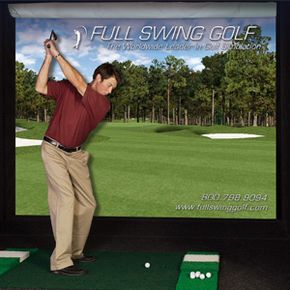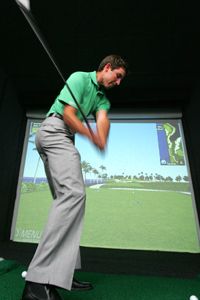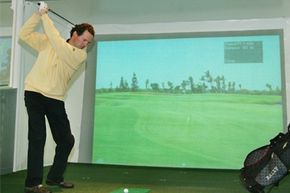For many of us, nothing is more enjoyable than a good game of golf on a cool, clear day. Sunny skies, a nice breeze and a challenging course make for a great way to spend time with friends or to hone your skills alone.
But the real world sometimes thwarts that perfect game of golf. What if it's rainy or excessively hot? What if you don't have a good course in your area? What if you're stuck at home or at work and don't have time to play a full 18 holes?
Advertisement
Fortunately, if all the forces in the universe seem to be keeping you from your favorite sport, the virtual world can step up and take its place. This is where a golf simulator comes in -- a computerized game of golf, in your home or office, designed to mimic the real game while also improving your skills.
This isn't Wii Sports golf or those lame arcade games with the trackball, either. These simulators are high-tech machines that can analyze your swing and use computerized models of real courses. Using radar and light sensors, they detect countless factors that go into your shot and swing.
They sometimes utilize standalone screens and realistic 3-D graphics. In essence, they're as close to the actual game of golf as you can get without having to go outside. And they're available for just about any pocketbook, too, prices range from several hundred dollars to as much as $50,000.
In this article, we'll look at how golf simulators work, and if you're a real golf fanatic, we'll even tell you why putting one in your home may not be such a bad idea.
Advertisement


